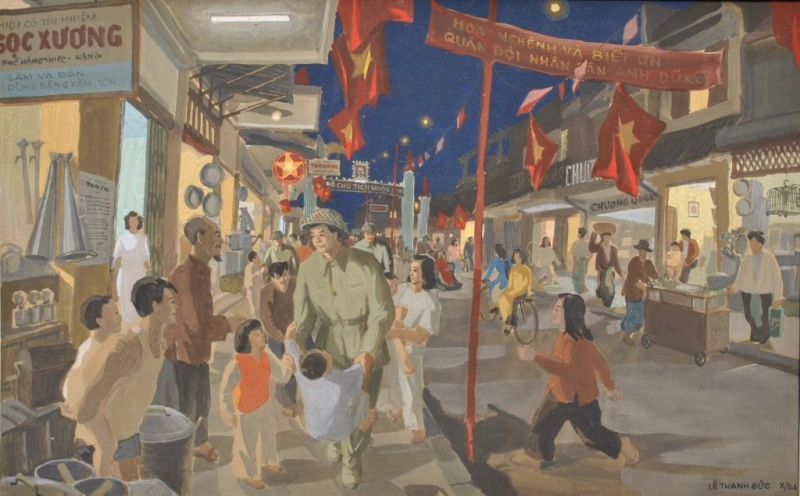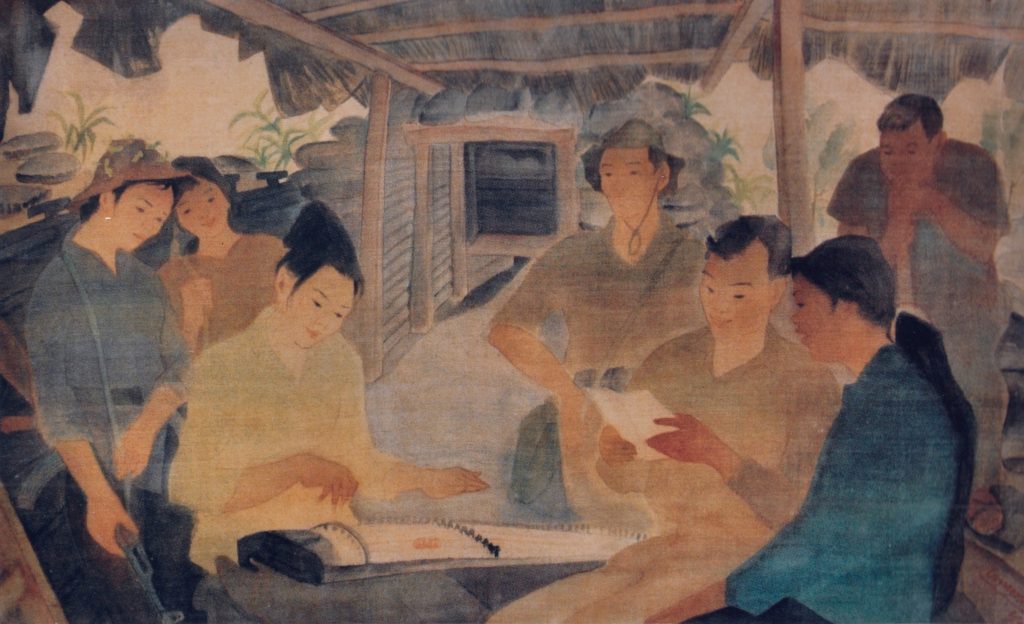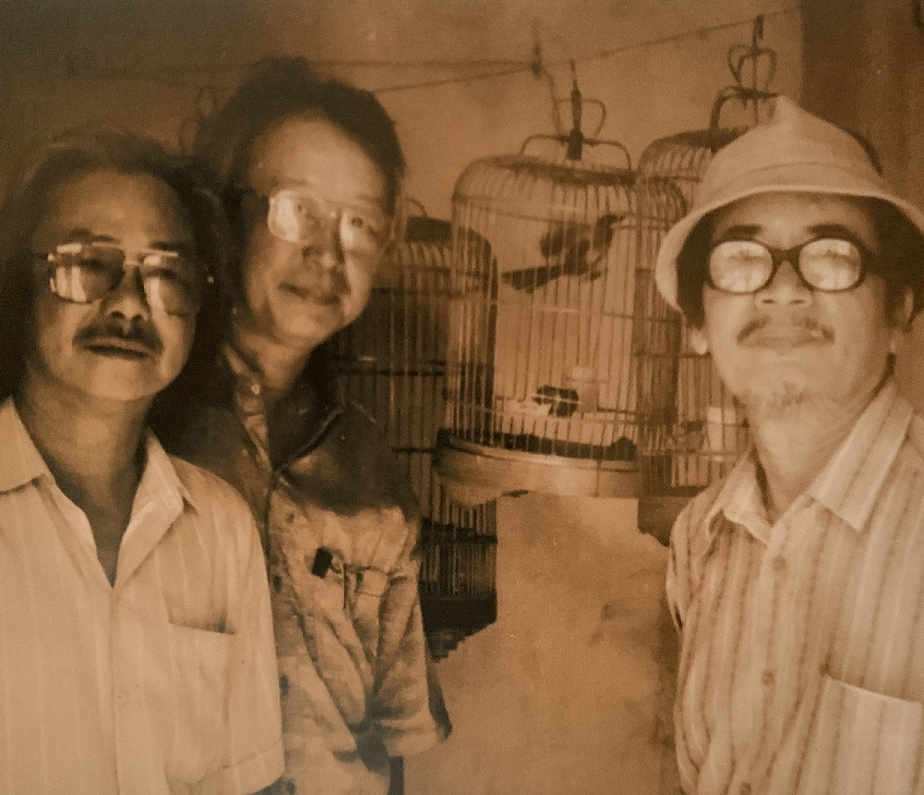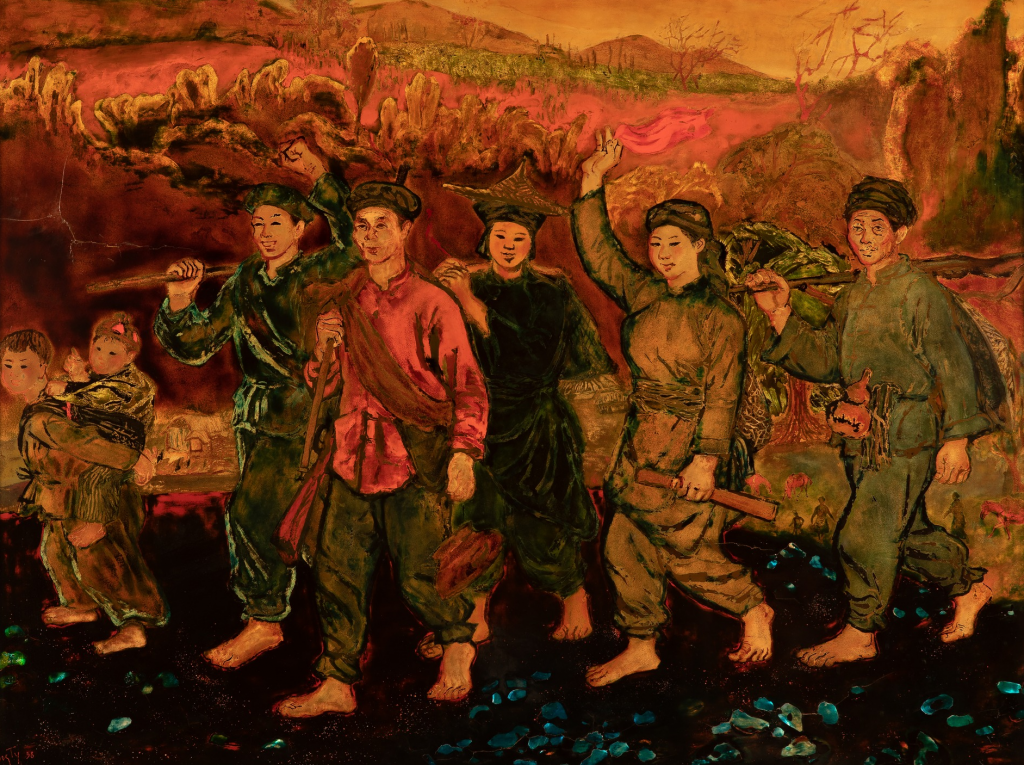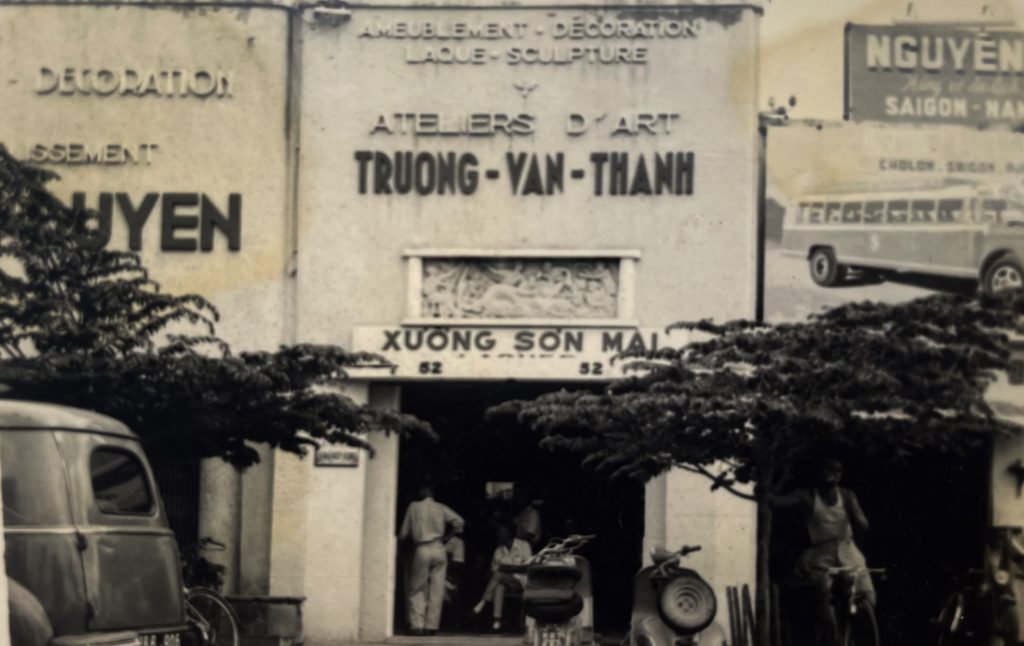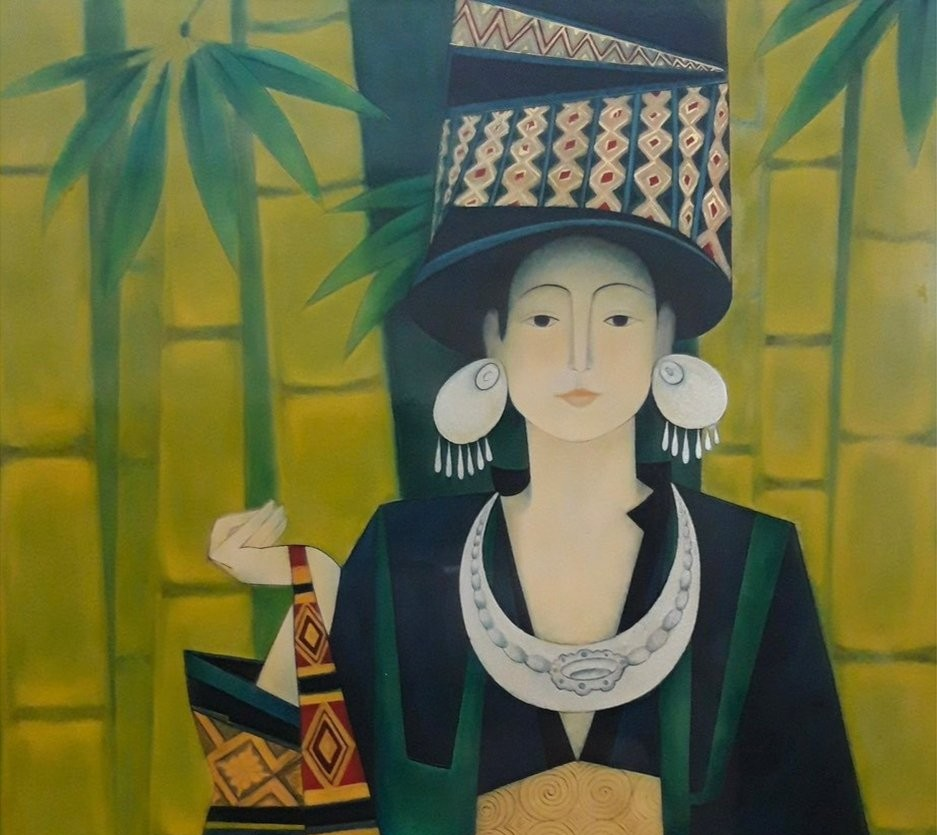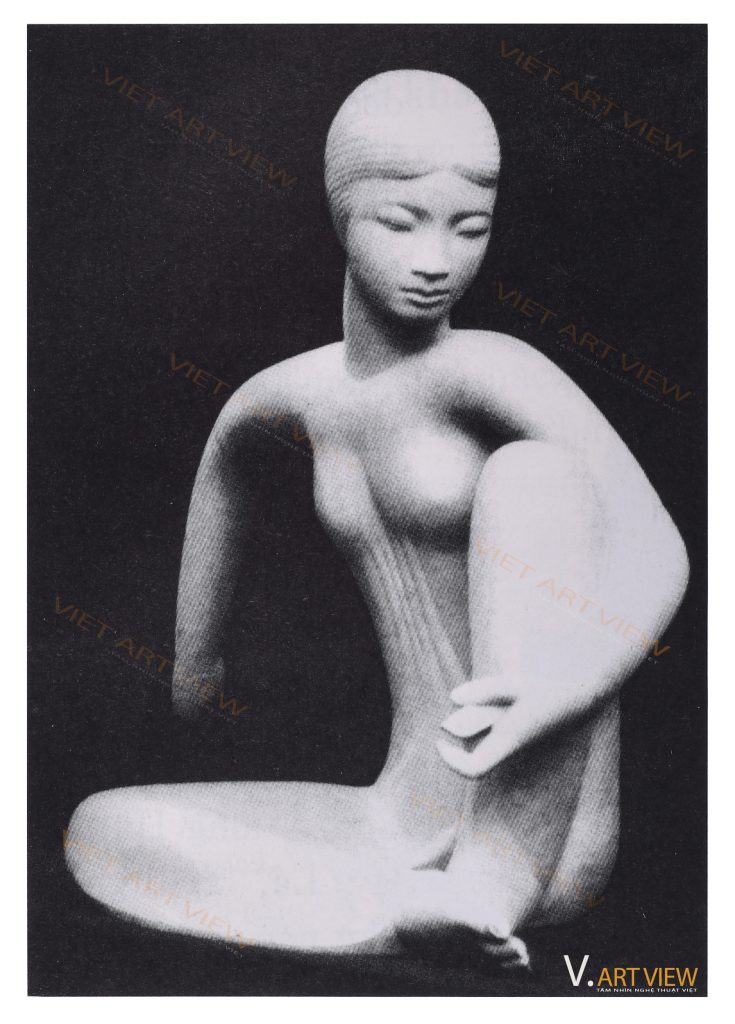
Pham Muoi (1935). Girl sharpening spike. 1969. Plaster. H = 75 cm
In 1973, the First National Sculpture Exhibition with the content summarized sculptures in 1963 – 1973, also from then to the fifth 2003 – 2013 exhibition, Vietnamese sculpture went on long distances with the contribution of many generations of Vietnamese sculptors in two training centers, Hanoi Fine Arts University and Industrial Fine Arts University.
The work ‘Girl sharpening spike’ of sculptor Pham Muoi participated in the display at the First National Sculpture Exhibition (1963 – 1973) at Vietnam Fine Arts Museum, besides the work of sculptors Diep Minh Chau, Tran Van Lam, Nguyen Thi Kim, Phuoc Sanh, Pham Gia Giang, Nguyen Hai and Le Cong Thanh.
Inspired by the images of woman communication soldiers and southern mothers in the national salvation war against the US at the fiercest stage (1965-1975), sculptor Pham Muoi created the circular statue ‘Girl sharpening spike’ (1969), a familiar daily image in the Southern war zone.
Using three-dimensional visual language, Pham Muoi built the image of a young woman close to realistic traditional sculpture. The body of the girl reaching forward become thinner, but the shape is still full and round. The curves on the body, from the two soft relaxed arms in the sharpening movement to the blouse, the folds of the pants, although simple, have softened the whole statue. The character’s delicate facial features, hair style and typical outfit represent the image of young Southern girls in the past. The point of view from the eyes to the hands connects the character’s feelings in a quiet but responsible job.
The character is in a state of calm, neutral, peaceful with a deliberate movement in a harmony, not very impulsive in visual. The concept of art is the description of the world that has become no longer complete and accurate in ‘Girl sharpening spike’. Pham Muoi’s point is, art does not describe but says something in feeling and thought.
Pham Muoi wanted the work to go beyond its physical limits. Appearance descriptions can be done in any subject, technique, material or dimension. Pham Muoi’s sculptural language has historical sociological treatises, distilling the moment which cannot return of memories about both war and life. His statue is a manifesto for a content that embodies thoughts of the time.
When Pham Muoi created ‘Girl sharpening spike’, he probably faced two options, Baroque or Neoclassical. Both were huge art trends of Europe in the seventeenth century that student Pham Muoi had studied hard in the Soviet Union in the 1960s.
Following the Baroque style, represented by the Italian sculptor Lorenzo Bernini once broke the dry, solemn structure of the ancient Greek architecture to replace it with the swirling, winding columns, created a strong, exuberant feeling. The sculpture of Lorenzo Bernini is also in this style, characterized by angular, vibrant, wriggling shapes to create a sense of restlessness as in ‘St. Teresa’ (1640).
Following the Neoclassical style, featured the French sculptor Antonio Canova who respected the Greek model through the body of Venus sculpted from glamorous marble, typical with the work ‘Three beauties’ (1813) which enhanced the harmonious, soft, charming lines of young women.
And ‘Girl sharpening spike’ is in the second style: classic. It was the choice to suit the Asian organs of Vietnamese people. In this work, Pham Muoi combined the beauty of the exemplary lines on the body of marble goddesses, young women and religious aesthetic lines on the body of the green stone statue Amitabha Buddha in Phat Tich pagoda, the Ly dynasty (the 11th – 12th century).
Back to the work ‘Girl sharpening spike’, the focus is the face, hands, elegant pose and tight blouse highlights the young girl’s breast. She leaned forward but did not create a sense of unstability but confidently calm. Her face calmly, with her eyes looking down, elegant and contemplative, exudes a holy innocent beauty. The artist went straight to the theme of war, simplified with the strong image but still made a difference for the character. The young woman is not a lady with fussy outfit in every meticulous detail, nor is she a southern mother with a dry face full of nerve against the enemy.
From the character’s image, the arrtist described the face of a person was also a face of history. It was the face of a generation of Vietnamese youth in the national salvation war. In the form of a gentle young girl, in her hand is a bamboo weapon in the tradition of fighting for thousands of years in Vietnam. The visual language in ‘Girl sharpening spike’ is not cumbersome with strong, drastic movements, dry and precise like Baroque but tenderly elaborate classic lines on soft white plaster material. The artist had ignored all the rigid and monotonous principles when created a statue on the topic of revolutionary war.
From the gentle, calm space of sharpening the spike, we can see clearly the honor of the belief for the loving country. The opposition between the young woman character and the job is to promote the theme of war – revolution, a symbol of patriotism against aggression. The opposition produced the beauty, a hidden beauty inside the shape and the expressed language. The statue full of poetry comes from the beauty of the young woman, her aspiration for life, dedicating to the country with a gentle but very meaningful job of civic responsibility.
If we could remove the image of the spike in the composition, it would immediately appear in front of the viewer the image of a daily simple girl chopping water hyacinth, cutting yam, washing vegetable by the pond, a mother taking care of her child by the warm cradle in a winter afternoon… The simple sculpture composition condenses thoughts and feelings from hands of an enthusiastic creative sculptor, with three-dimensional space. The character’s body is flexible and lively, carrying many different meanings of a familiar sitting posture from time immemorial.
The work ‘Girl sharpening spike’ is currently in the collection of Vietnam Fine Arts Museum. It was originally plaster, then the museum changed to bronze material, making the artistic effect a bit worse. Its soft, polished and silky quality with white plaster had created an effect in the viewers’ visual aesthetic. But regardless of the material, the work ‘Girl sharpening spike’ of sculptor Pham Muoi had recorded a period of resistance war against the US in the South of Vietnam, the late 20th century.
The image that appears on the statue is the country, the shape in memory and also the eternal tradition of Vietnam nation.
Photo taken by Photographer Le Vuong
Written by Researcher Nguyen Hai Yen
Copyrights belong to Viet Art View


